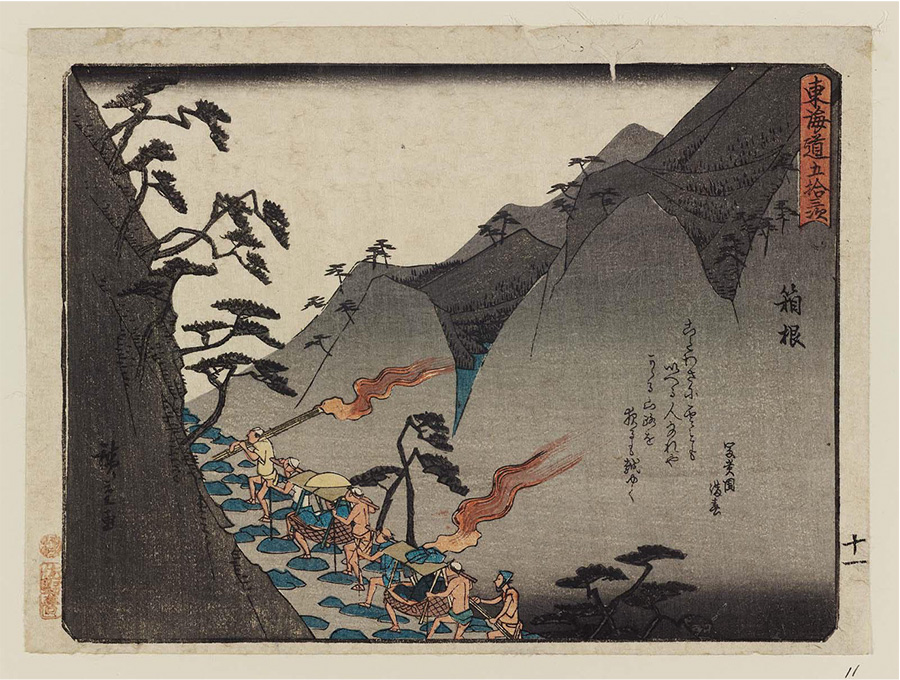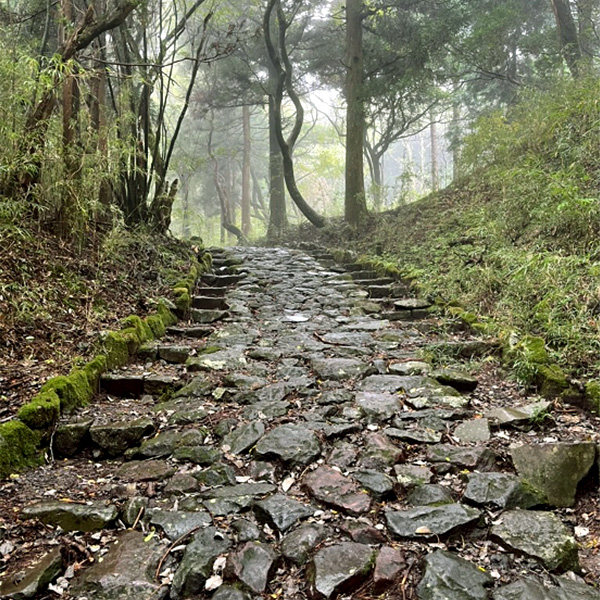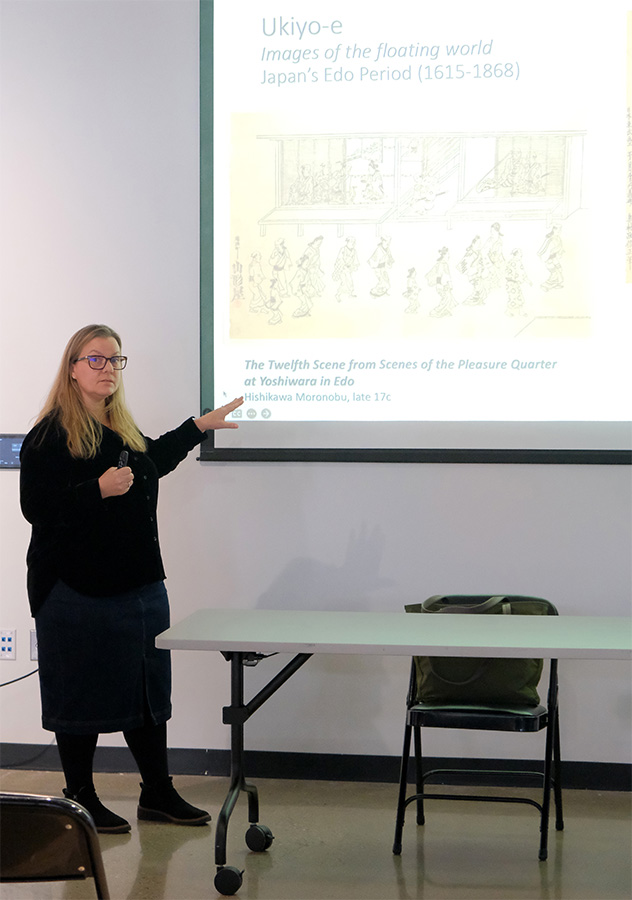Sabbatical journey: Revelations and a new course for students
A sabbatical year immersed in Japanese culture, language and the study of Ukiyo-e – images of Japan’s “floating world” – led Professor Chelsea Holton to two main “aha” moments and development of a new course for students at the Milwaukee Institute of Art & Design (MIAD).
Holton, associate professor of Art & Design History, says, “My research focused primarily on Japanese prints from the Edo Period (1615-1868). Research involved travel to Japan in 2024 with an itinerary paralleling the Tokaido Road – the most traveled route from Kyoto to Edo (Tokyo) during the Edo Period.”

Utagawa Hiroshige I, “Hakone, from the series Fifty-three Stations of the Tōkaidō,” c. 1840-42.

The Tōkaidō Road at the Hakone checkpoint.

Chelsea Holton presents her sabbatical work.

Hikone Castle
Describing it as “otherworldly,” Holton says her first “aha” experience “was hiking in the mountains of Hakone and finding parts of the old Tokaido Road that weave through the mountainsides. This was historically the most treacherous part of the route and is now really the only extant part of the old road.”
“The second standout experience was having access to the Zen tearoom, ‘Teigyoku-ken,’ in a sub-temple of the Daitokuji Zen complex in Kyoto,” continues Holton. “This building is rarely open to the public…. Being in this space that I had taught about for years was revelatory.”
In addition to spending months in an intense Japanese language class and continuing studies on her own, Holton achieved a main goal of her sabbatical. This spring she will offer MIAD students the elective: “Imaging the Floating World: Japanese Prints from 1600 through the 20th century.” Holton says, “I will also bring in my additional experiences in Zen spaces to my other classes on Japanese art.”
Holton hopes her sabbatical will help “students see that it is important to support one’s curiosity – that learning is a lifelong process. I want to encourage students to travel and experience material cultures in person. [T]hey have access to so much incredible information and learning about other cultures and even a new language has never been more accessible.”
Learn more about MIAD’s Critical Studies program!
News
Social Choreography: A practice of dancing toward liberation
Kim Miller, professor of Fine Art + New Studio Practice, returned to the Milwaukee Institute of Art & Design (MIAD) following her sabbatical year with a Ph.D. and an innovative presentation and practice for students, faculty and staff.
Fine Art senior selected for Wisconsin Artists Biennial 2026
Marta Tereziya ’26, a Fine Art + New Studio Practice senior at the Milwaukee Institute of Art & Design (MIAD), is one of 50 Wisconsin artists selected for the 2026 Wisconsin Artists Biennial. The Wisconsin Artists Biennial is co-sponsored and organized by Wisconsin Visual Artists and the Museum of Wisconsin Art.
Fashion students design adaptive clothing for Independence First
For the second year in a row, Fashion and Apparel Design students at the Milwaukee Institute of Art & Design (MIAD) worked with Independence First to design adaptive clothing tailor-made for two people who use wheelchairs. The project is part of a junior-level Patternmaking & Construction course.
MIAD Values Recognition Award: Nichole Uecker
Nichole Uecker, Student Accessibility Coordinator, received the October 2025 MIAD Values Recognition Award at the Milwaukee Institute of Art & Design (MIAD). Nichole’s nominations highlighted her embodiment of MIAD’s Core Values, especially Community, Inclusion and Kindness.
Personal and professional passion inspire Product Design student
When senior Carmen Briones’ mother was diagnosed with breast cancer during Briones’ sophomore year at the Milwaukee Institute of Art & Design (MIAD), finding a bra that was comfortable with a medical port became an additional challenge. Briones ’26 (Product Design) answered that challenge in her Design for Human Interface class by designing a product that reduces pain while increasing mobility.
